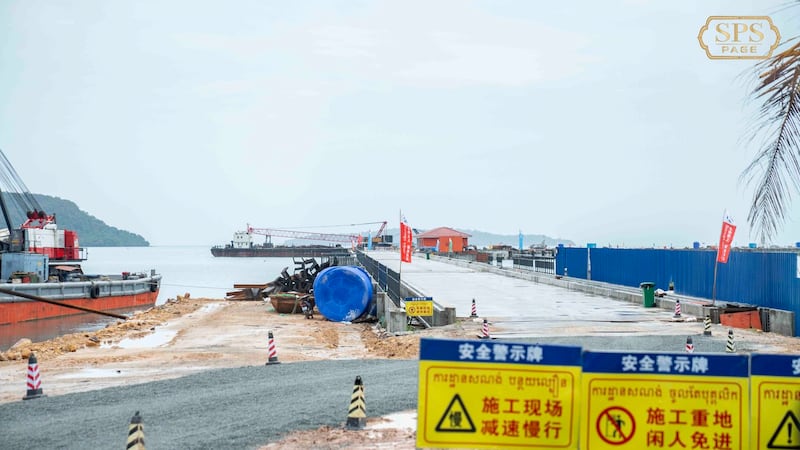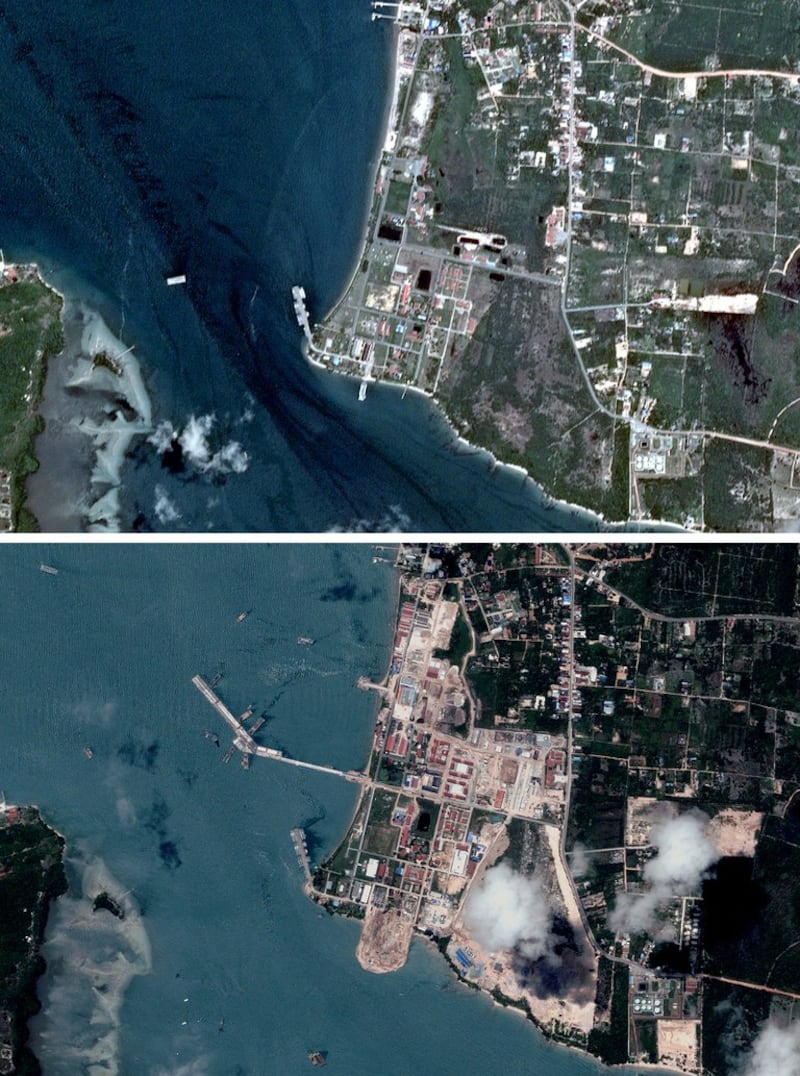Cambodia’s defense minister Tea Banh and his son Tea Seiha, who is soon widely believed to succeed him in the new cabinet, have visited a Chinese-funded naval base.
This is the first military project that the father-and-son duo visited since the one-sided general election, in which the ruling Cambodia People’s Party won a landslide victory.
In a set of photos published on his Facebook page, defense minister Tea Banh was seen surrounded by Cambodian army officers during Sunday's Ream Naval Base visit.
The project is proceeding “according to plan,” the Facebook post said without detailing the time schedule.
It “will increase the Navy's capacity to a higher level in the future,” it said.
Tea Seiha, 38, the second son of Tea Banh, was in the entourage, as well as Tea Vinh, Tea Banh’s younger brother and Tea Vinh’s son Tea Sokha.
Currently the governor of Siem Reap province, Tea Seiha is also a three-star general in the Royal Cambodian Army.
Leaked official documents seen by a RFA commentator billed him as the successor of Tea Banh as defense minister.

A number of other leaders’ children are also expected to take over their parents’ positions, including Prime Minister Hun Sen’s son Hun Manet.
Tea Vinh is the current commander of the Royal Cambodian Navy. In November 2021, the U.S. Treasury Department announced it was sanctioning him for corruption related to the Ream Naval Base. His son Tea Sokha also serves in the Navy at the rank of major general.
‘According to plan’
The construction of the base, located in Sihanoukville province on the Gulf of Thailand, is near completion, according to a recent report by the U.S. satellite imagery company BlackSky.
Earlier this month, Radio Free Asia also reported that satellite images obtained by RFA revealed "significant developments" at the base, which is now equipped with a deep draft pier that can accommodate aircraft carriers.
Compared to February this year, the pier has been measurably extended, with the usable pier length estimated to be roughly 300 meters (984 feet). That means it could provide access to full-size warships of the People’s Liberation Army (PLA) Navy, including its new Type 003 aircraft carrier, Tom Shugart, Adjunct Senior Fellow with the Defense Program at the Center for a New American Security, told RFA in an interview.
An area of reclaimed land in the southern part of the base has tripled in size to more than three hectares.

Craig Singleton, China Program deputy director and senior fellow at the Foundation for Defense of Democracies, was quoted in the BlackSky report as saying that there is “a near-exact similarity” between the pier at the Ream base and another military pier at the PLA Support Base in Djibouti.
“The speed of development at the Ream base makes it difficult to deny the intentional velocity behind China’s overseas basing initiatives,” Singleton was quoted as saying.
Thanks to its strategic location, the base would help Beijing boost its power projection not only in Southeast Asia but also the Taiwan Strait. This would be China’s first naval staging facility in Southeast Asia and the second in the world after the base in Djibouti.
The Ream base construction began just two years ago in June 2021 with Beijing’s funding.
Cambodia’s Prime Minister Hun Sen reportedly assigned land to the Ministry of National Defense to develop an air defense command and general headquarters, as well as a naval radar system in Ream National Park, adjacent to the naval base.
Phnom Penh has repeatedly denied that China is being given exclusive military access to the base, saying that would contradict Cambodia’s constitution.
The U.S. Department of Defense's China Military Power Report in November 2022 said China “has likely considered Cambodia, Myanmar, Thailand,” among other places, as locations for PLA military logistics facilities.
Edited by Mike Firn.
